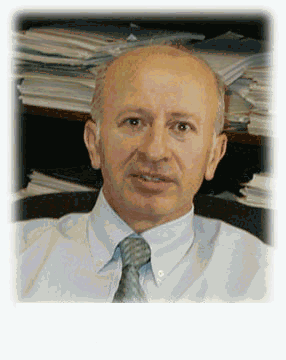 Dr. Paolucci conducts his research in the Computer Graphics Laboratory and other laboratories at Fitzpatrick Hall of Engineering.
Dr. Paolucci conducts his research in the Computer Graphics Laboratory and other laboratories at Fitzpatrick Hall of Engineering.

Laminar and turbulent natural convection in enclosures; stability of flows; nonlinear dynamical systems and chaos; two-phase flows; analytical and computational solutions of partial differential equations.
 Dr. Paolucci conducts his research in the Computer Graphics Laboratory and other laboratories at Fitzpatrick Hall of Engineering.
Dr. Paolucci conducts his research in the Computer Graphics Laboratory and other laboratories at Fitzpatrick Hall of Engineering.

Thermal convection in differentially heated cavities has been studied extensively because of its relevance in a number of diverse fields. The majority of prior work has been concerned with steady-state laminar flows. Yet in many of the fields of application, the flow is unsteady and possibly turbulent. Since many variables of engineering interest depend strongly on the flow regime, it is essential to understand the different physical processes responsible for the conversion of an initially laminar flow to a turbulent one. Numerical and analytical methods are being used in this study. Recent results have shown that an oscillatory approach to steady-state, oscillatory instabilities, quasi-periodic flow, chaotic flow, and turbulent flow exists for the flow regimes investigated. We are also investigating the effect of variable properties on the flow.
Fabrication of semiconductors using chemical vapor deposition (CVD) depends critically upon the uniformity of the deposition processes which in turn is strongly affected by convective and diffusive transport. A typical reactor configuration comprises of a flowing gas in a channel with deposition occurring on a heated substrate via surface reactions. The flow and temperature fields, and subsequently the uniformity of deposition, are completely affected by any possible instabilities of the flow. These effects are important for the design and operation of such CVD reactors as demands for deposition uniformity become more stringent. The objective of this research is to identify the choices of design parameters that lead to such instabilities, and characterize the resulting flows.
There have been many studies of two-phase flows in a variety of problems. In most of these studies the dispersed phase is assumed to be dilute. There are many cases of practical interest where the volume fraction of the dispersed phase can range from the dilute to the dense regime. The study of two-phase flows where the dispersed phase is not dilute is a challenging one. We have started out by studying the thermodynamic and transport properties of the mixture. Using these properties we have been able to obtain analytical and computational solutions for the simple problem of pressurized mass transfer between two vessels. Much work still remains to be done in this area.
The purpose of this study is to look at the significant role that heat transfer and fluid mechanics play in the manufacturing of castings from metal dies, with the primary intent of modeling such processes. The solidification is a phase transformation that is accompanied by release of thermal energy. The essential feature of this phase change transformation is the presence of a moving, generally multidimensional, solid-liquid interface separating regions having different thermophysical properties and dynamics. One of the major manufacturing problems is to extract the heat in a controlled manner. Both the structural perfection and the microstructure of the casting greatly depend on solidification parameters, and there is a close interaction between these parameters and heat transfer in the solid and melt during solidification of metals and alloys. We are presently investigating the important issues which affect the manufacturing process.
